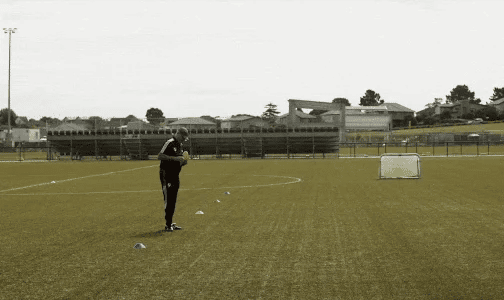Reader,
Being an organised coach and following a session plan are fundamental to good coaching.
Knowing how to efficiently set up your session can save you time, increase ball-rolling time for the players, and minimise stress when you first arrive.
In our Introduction to Soccer Coaching online course, Rob Sherman (Current Fiji Men’s National Team Coach and Former Technical Director of Football Australia) shares his system for ensuring you’ve got everything covered when you turn up to training.
Rob’s N.E.A.T system helps to ensure the players spend their time learning to solve football problems, not waiting for the coach to set up or talk… Here’s the breakdown.
Numbers
We all want certainty around how many players are attending, and even numbers can make activities easier. But in reality, players won’t turn up, could run late or can get injured within a session – so we need to be adaptable.
So how can you deal with odd numbers? Plan for different scenarios and utilise neutral or common players who can play for both teams, set up 3 team activities, or play overload games (e.g. 5v4) and set a challenge for the 4 who are outnumbered.
Equipment
Essential equipment could include…
- Cones
- Bibs
- Balls (1 for each player if possible)
- Goals (or mini-goals)
- First aid kit
- Ball pump
- List of contact details for parents
- Emergency protocols
Area
Checking the safety of the pitch can be something that’s easily neglected. Are there goals or objects around that could cause injury? If the pitch has potholes, perhaps set up in another area and if that’s not possible, ensure they are marked clearly for players to avoid.
 |
Click here to watch world-class coach, Rob Sherman walk through setting up a session.
When marking out the areas, we recommend starting from the outside in. For example, you might have a plan to finish with a large-sided game such as an 8v8. If this is the case, mark that area first and then set up additional activities within that space.
Rob walks you through setting up a session in this video.
Time
Maximise every minute. If you have 60 minutes, you might plan 3 activities of 20 x minutes. You also need to be aware of how long your interventions are. Are you talking for 2-3 minutes when it could be 30 seconds? If you have a 60 minute practice, try and get the ball rolling for 75% of the time as a target. This gives you 15 minutes to instruct, explain, allocate drinks breaks and move between activities.
Two things to consider.
- Do you have safety protocols in place at your club to ensure injuries can be dealt with?
- What fundamentals do you support coaches with to ensure a good session is delivered?
One thing for you to try this week.
Time your own interventions and work out how much the players play within the session. This can be a powerful tool in reflecting on your approach.
One critical resource on the topic.
Check out this video we have taken from our online coaching course, Introduction to Soccer Coaching with Fiji Men’s National Coach & PDP expert, Rob Sherman as he walks you through the set up for a youth football training session.
